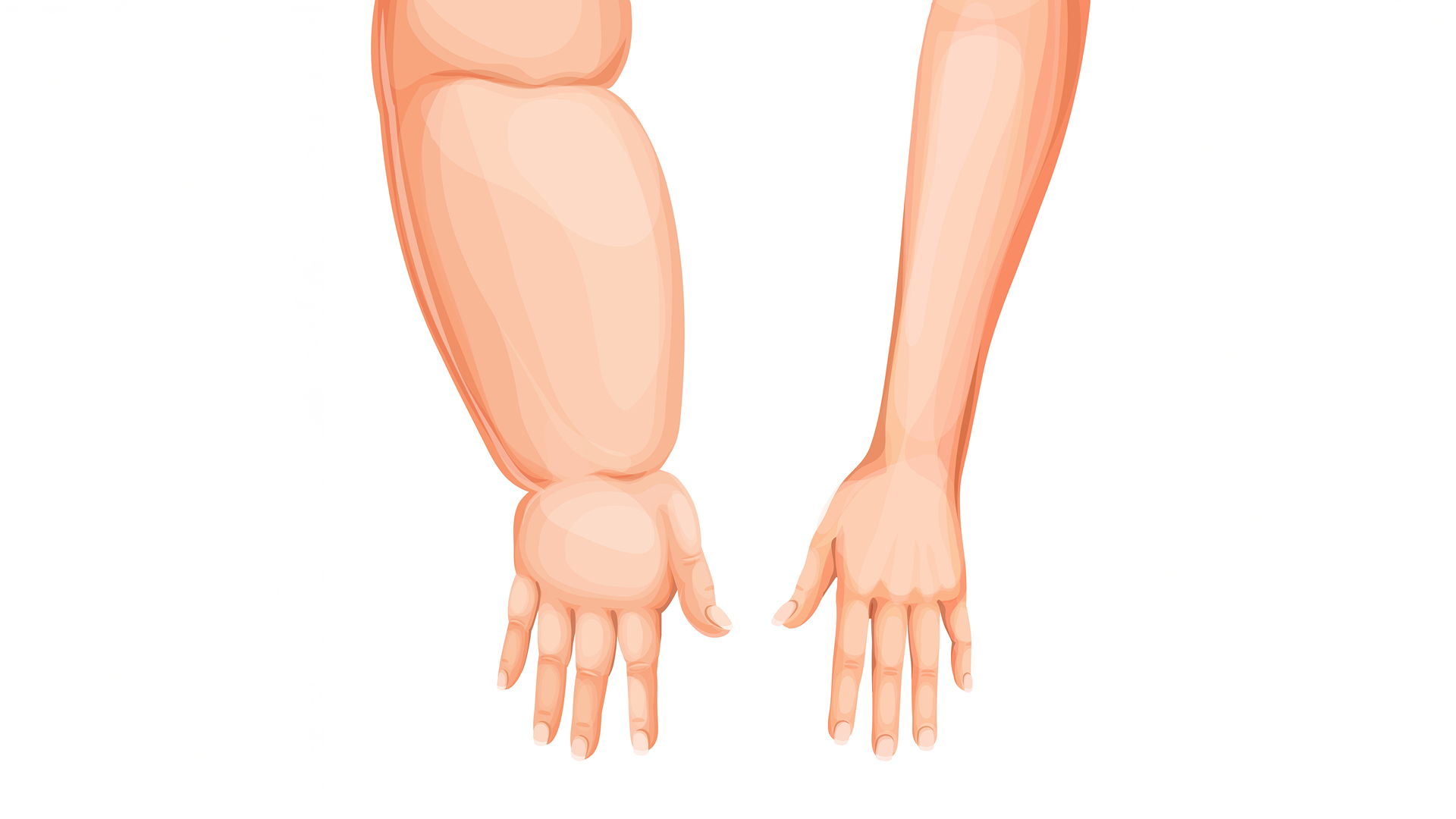What is Lymphedema?
Lymphedema is a common complication of breast cancer surgery. It occurs when lymph fluid accumulates in the tissues under the arm, where lymph nodes were removed or damaged, causing swelling that typically affects the arm, chest, or both. This happens because the lymphatic system, which helps remove excess fluid from tissues, can be disrupted during surgery.
the number of women affected by lymphedema after Mastectomy with lymph nodes removed is a huge number!
Causes:
- Lymph Node Removal: During mastectomy, lymph nodes (often in the underarm area) are removed to check for cancer spread.
- Radiation Therapy: Radiation to the lymph nodes can cause scarring and blockages. 30-70% of women are affected. Lymphedema can develop immediately or decades after radiation therapy. It’s caused by localized fluid retention and tissue swelling due to a dysfunction in the lymphatic drainage.
- Infection: Post-surgery infections can increase the risk of lymphedema.
Symptoms:
- Persistent swelling in the affected limb or chest
- A feeling of heaviness or tightness
- Restricted range of motion
- Recurring infections in the affected area
- Hardening and thickening of the skin
Living With Lymphedema
The following steps can help to avoid making lymphedema worse:
- Guard Against Infection: Keep your hands clean by washing them often with soap and warm water. This is especially crucial after using the restroom and before handling food.
- Elevate: When you can, elevate the swollen area higher than your heart. Use a pillow or rolled blanket to prop up your arm or leg.
- Stay Active: Physical activity keeps lymph fluid moving and supports heart health. Talk to your doctor to find the right exercise for you. Warm up, cool down, and avoid any exercise that causes pain.
- Achieve a Healthy Weight: Extra weight can worsen lymphedema by putting pressure on your lymph nodes. Aim for a healthy weight to help reduce swelling.
- Protect Yourself: Prevent cuts and scrapes that could lead to infection by wearing gloves for household or outdoor chores. Choose an electric razor over a manual one, and use bug repellents to prevent bites.
- Treat Injuries Promptly: If you get a cut or scrape, even a minor one, wash it with soap and water, apply antibiotic ointment, and cover it with a bandage to prevent infection.
- Avoid Blood Pressure Cuffs and Blood Draws on the affected limb
Management:
While there is no cure for lymphedema, it can be managed with treatments such as:
- Compression Garments: Wearing compression sleeves or bandages to help reduce swelling.
- Manual Lymph Drainage: A specialized form of massage to encourage lymph fluid flow by a special Lymphedema Physical Therapist 2-3 times a week.
- Exercise: Gentle exercises to promote lymph fluid circulation.
- Skin Care: Keeping the skin clean and moisturized to prevent infections.
- Pneumatic Compression: Using a pump to help move lymph fluid out of the affected area.
- Flying and extended sitting restrictions apply because the changes in altitude and pooling blood seriously effect lymphedema and must be properly managed.
Manual management of Lymphedema is time consuming, expensive and inconvenient in the early stages – and it is all those things plus physically debilitating and deforming in its later stages. The good news is you now prevention options!
To Learn More About Them From The Experts
Choose Your Membership
Unlock Exclusive Content, Expert Guidance, and Premium Features by Selecting the Membership Plan That Best Suits Your Needs. Join Today – Take The First Step Toward YOUR Healing!
Already a member? Log in here

